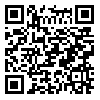BibTeX | RIS | EndNote | Medlars | ProCite | Reference Manager | RefWorks
Send citation to:
URL: http://ismj.bpums.ac.ir/article-1-576-en.html

 , Nader Mosavari *
, Nader Mosavari * 
 2, Sohela Moradi Bidhendi3
2, Sohela Moradi Bidhendi3 
 , Ali Asghar Farazi4
, Ali Asghar Farazi4 
 , Mohammad Mohammad Taheri1
, Mohammad Mohammad Taheri1 
 , Zahra Rajabi5
, Zahra Rajabi5 
 , Khalil Azizian1
, Khalil Azizian1 
 , Yoseph Amini1
, Yoseph Amini1 
 , Azad Jamei6
, Azad Jamei6 

2- Department of Microbiology, Tuberculin Department, Razi Vaccine & Serum Research Institute, Karaj, IRAN , n.mosavari@rvsri.ir
3- Department of Microbiology, Razi Vaccine & Serum Research Institute, Karaj, IRAN
4- Department of Tropical, School of Medicine, Arak University of Medical Sciences, Arak, IRAN
5- Food Microbiology Research Center, Tehran University of Medical Sciences, Tehran, IR IRAN
6- Department of Endodontics,Scool of Dentistry, Tehran University of Medical Sciences, Tehran, IRAN
Background: RFLP-IS6110 standard technique to genotyping M. tuberculosis.The aims of this study were to identify the genetic diversity of M. tuberculosis population in Markazi province and to recognize the mode of disease transmission in this region. Material and Methods: The RFLP results of 42 isolates of M. tuberculosis deposited in the Mycobacterial Centre from Markazi province were analyzed. DNAs isolated from these isolates were enzyme digested with Pvu II, and hybridized with a PCR amplified DIG-labeled IS6110 probe. Results: The isolates were classified into four groups, based on the copy numbers, as follows: (1) lacking IS6110 element (2) low copy numbers (1-2) (3) intermediate copy numbers (3-5) and (4) high copy number (6-17). Copy numbers higher than 17 however were not observed in any of the isolates studied, 72 percent of the isolates showed high copy numbers of IS6110, 13 percent intermediate copy numbers, 10 percent low copy numbers, whereas 5 percent isolates lacked IS6110 element. Conclusion: IS6110 DNA fingerprinting assisted us to find epidemiological links between some TB cases, and this technique estimates from reactivation of latent infection transmission of the disease in Markazi province. The low rate of clustering indicates that tuberculosis among studied population is resulted mainly from reactivation of latent infection in this region.
Received: 2012/09/25 | Accepted: 2012/10/31 | Published: 2014/08/11
| Rights and Permissions | |
 |
This work is licensed under a Creative Commons Attribution-NonCommercial 4.0 International License. |



